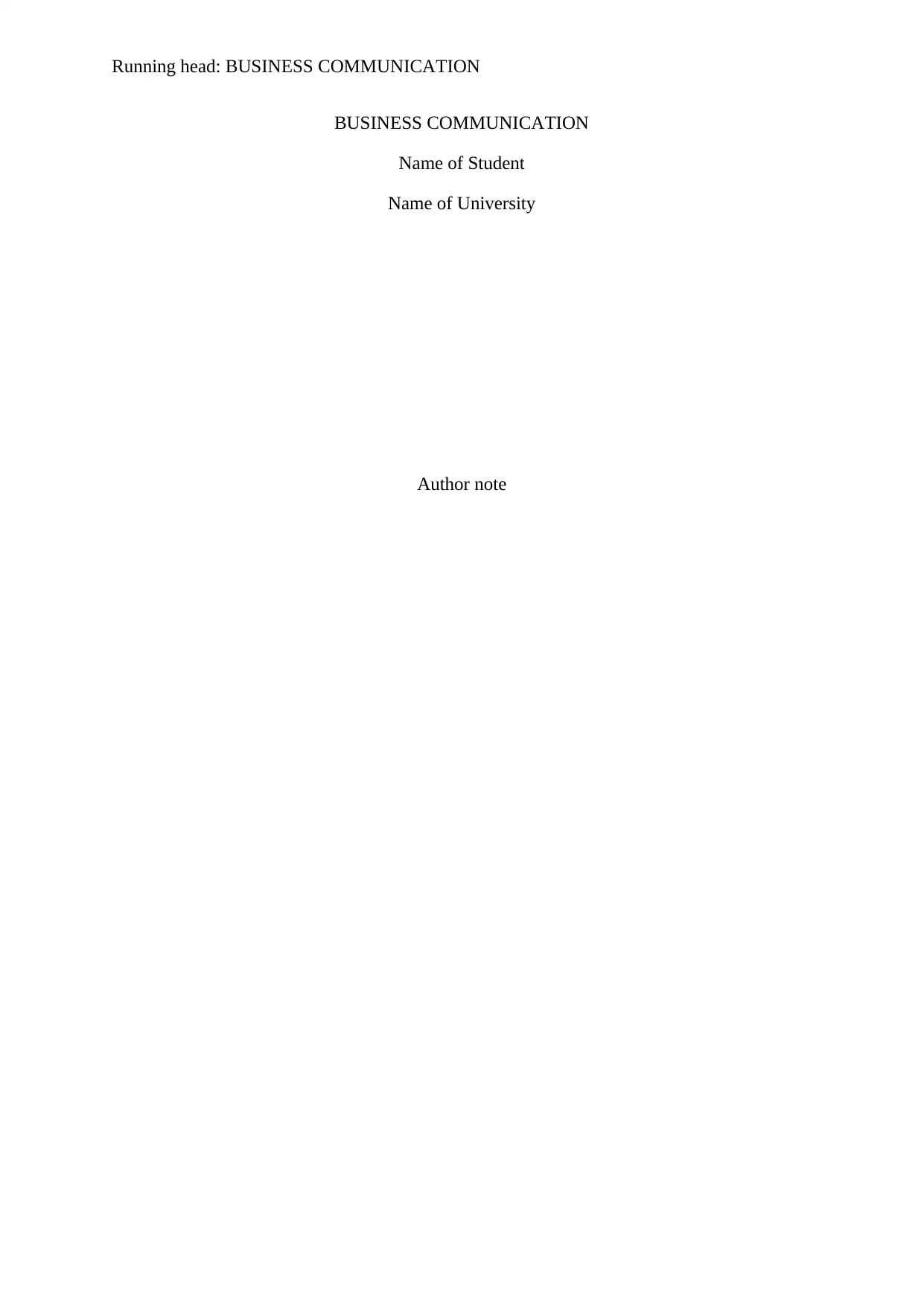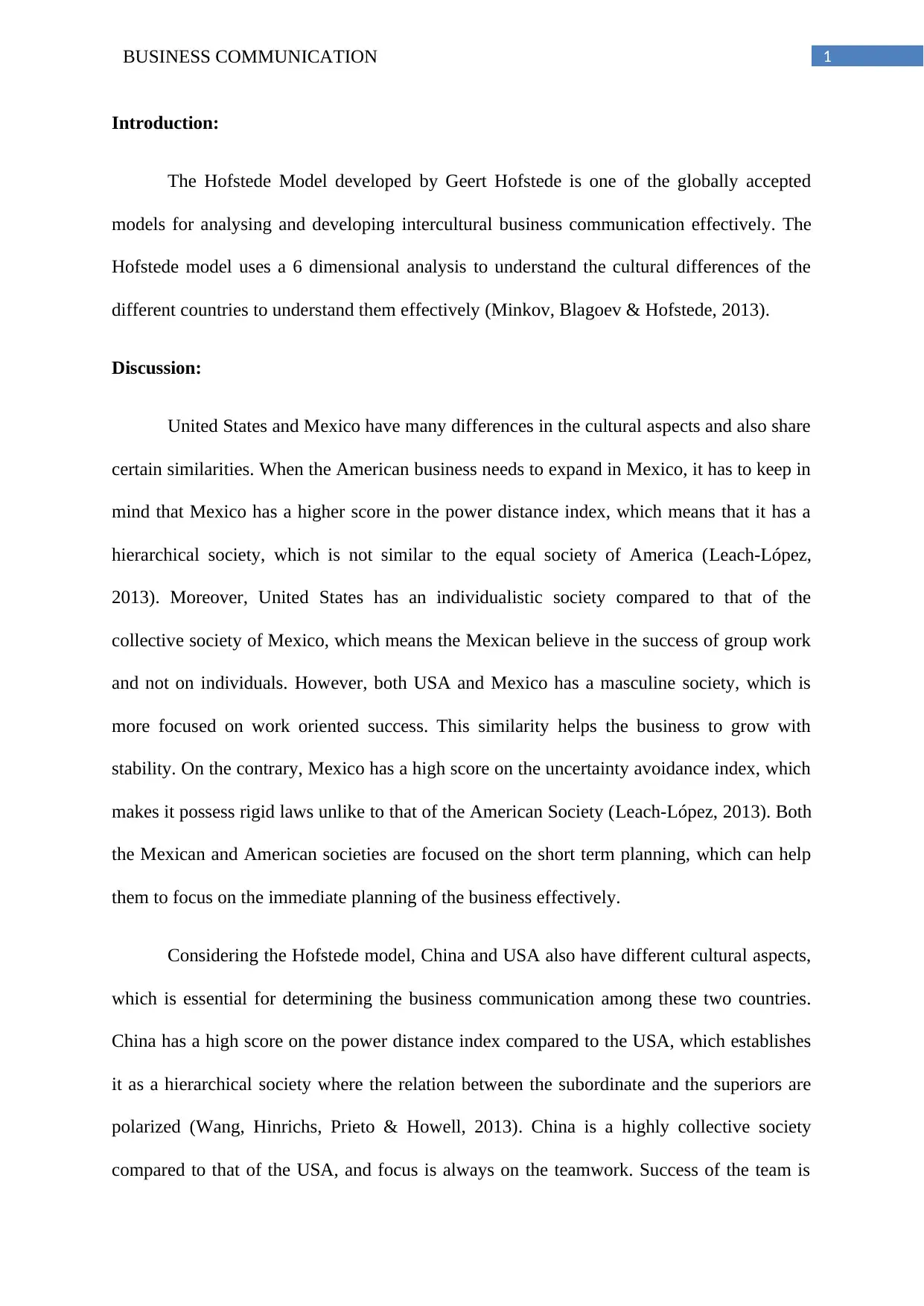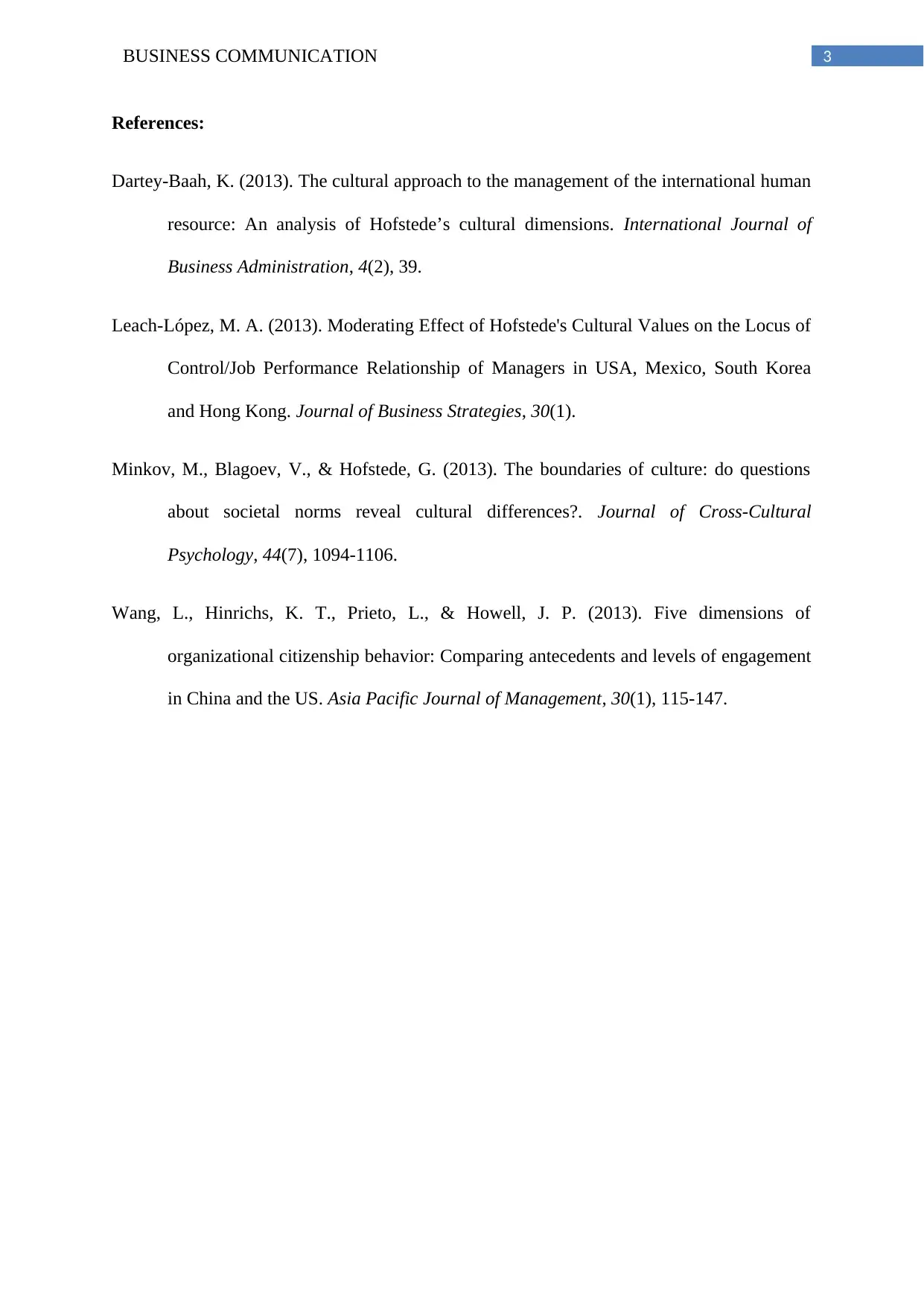Business Communication: Hofstede Model for Intercultural Analysis
VerifiedAdded on 2023/06/03
|4
|698
|326
AI Summary
The Hofstede Model developed by Geert Hofstede is one of the globally accepted models for analysing and developing intercultural business communication effectively. The article discusses the cultural differences and similarities between USA and Mexico, and China and USA, and how to develop communicative strategies accordingly to gain success in the respective countries.
Contribute Materials
Your contribution can guide someone’s learning journey. Share your
documents today.
1 out of 4
![[object Object]](/_next/static/media/star-bottom.7253800d.svg)









